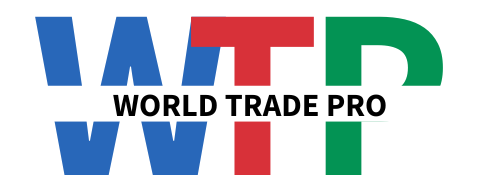Where in the world are rare earth metals sourced from and does China have a near monopoly on production and exports? What options exist for diversifying the rare earth supply chain to other nations?
Quote from chief_editor on February 12, 2024, 9:43 pm
Rare earth metals are a group of 17 elements with unique magnetic, phosphorescent, and catalytic properties essential for advanced electronics, green technologies, and defense systems. Despite their name, most rare earth elements are relatively plentiful in Earth's crust. However, they rarely occur in mineable concentrations. The terms “rare earths” originates from the late 18th century discovery of oxide mixtures called “earths” because their properties resembled traditional dirt. However, they are diffuse and intermixed ores require advanced processing to extract usable rare earth minerals. A more accurate descriptor would be “diffuse earths.”
The challenging production process is central to understanding China’s current monopoly and the intricacies of diversifying global supply chains. Rare earth ores contain less than 1% rare earth oxides mixed with other mineral combinations, requiring physical separation through crushing, grinding, flotation tanks, and magnetic or electrostatic separation. The raw isolates then undergo acid dissolution and solvent extraction. Purification produces stable rare earth metals, alloys, or magnets. Every transformation stage generates immense quantities of toxic acidic wastewater, radioactive tailings, and hazardous gases, especially from thorium and uranium traces.
Environmental concerns now restrict most potential producers, although lax regulations and oversight enabled China’s rapid ascent over the last three decades. Facing few pollution limits, they leveraged massive production to flood the global market and restrict exports through quotas and taxes. China consolidated control by undercutting prices other nations could viably match without wasting natural resources through dirty processing. By the late 1990's, they produced over 95% of the global supply despite only holding around 30% of known reserves within their borders. Their current share hovers around 85% despite holding just 44% of global reserves.
Alternate major deposits exist worldwide, such as in Brazil, Vietnam, Russia, India, Australia, and even the United States. Limited output results since most nations now ban unrestricted mining or toxic chemical processing practices. Also, rare earth processing expertise remains predominantly Chinese. Efforts are underway worldwide to counter China’s market share through cleaner innovations, renewed mining, and strategically accessed reserves. For example, Japanese scientists pioneered ion-absorption rare earth extraction using refined leaching solutions to dissolve desired minerals without radical disruption or chemical contamination. This reduces toxic outputs, allowing consideration of domestic Japanese mines denied previously. Australian production also expanded through improved refining methods and access to operations overseas, including a planned US-Australia joint venture mine in Uganda starting operations in 2025.
Ultimately, the misnomer term “rare earths” obscures the intricate science and economics around accessing these diffuse global minerals. China judiciously exploited market advantages created by their loose environmental regulation and massive investment decades ago in specialized refining technology, expertise, and overproduction. Their government brilliantly cornered control over these essential technological minerals. However, global demand strains their exporting capacity while improved alternative production methods are loosening their stranglehold. With wise stewardship and scientific ingenuity, diverse supply chains can still develop sustainably worldwide.
Rare earth metals are a group of 17 elements with unique magnetic, phosphorescent, and catalytic properties essential for advanced electronics, green technologies, and defense systems. Despite their name, most rare earth elements are relatively plentiful in Earth's crust. However, they rarely occur in mineable concentrations. The terms “rare earths” originates from the late 18th century discovery of oxide mixtures called “earths” because their properties resembled traditional dirt. However, they are diffuse and intermixed ores require advanced processing to extract usable rare earth minerals. A more accurate descriptor would be “diffuse earths.”
The challenging production process is central to understanding China’s current monopoly and the intricacies of diversifying global supply chains. Rare earth ores contain less than 1% rare earth oxides mixed with other mineral combinations, requiring physical separation through crushing, grinding, flotation tanks, and magnetic or electrostatic separation. The raw isolates then undergo acid dissolution and solvent extraction. Purification produces stable rare earth metals, alloys, or magnets. Every transformation stage generates immense quantities of toxic acidic wastewater, radioactive tailings, and hazardous gases, especially from thorium and uranium traces.
Environmental concerns now restrict most potential producers, although lax regulations and oversight enabled China’s rapid ascent over the last three decades. Facing few pollution limits, they leveraged massive production to flood the global market and restrict exports through quotas and taxes. China consolidated control by undercutting prices other nations could viably match without wasting natural resources through dirty processing. By the late 1990's, they produced over 95% of the global supply despite only holding around 30% of known reserves within their borders. Their current share hovers around 85% despite holding just 44% of global reserves.
Alternate major deposits exist worldwide, such as in Brazil, Vietnam, Russia, India, Australia, and even the United States. Limited output results since most nations now ban unrestricted mining or toxic chemical processing practices. Also, rare earth processing expertise remains predominantly Chinese. Efforts are underway worldwide to counter China’s market share through cleaner innovations, renewed mining, and strategically accessed reserves. For example, Japanese scientists pioneered ion-absorption rare earth extraction using refined leaching solutions to dissolve desired minerals without radical disruption or chemical contamination. This reduces toxic outputs, allowing consideration of domestic Japanese mines denied previously. Australian production also expanded through improved refining methods and access to operations overseas, including a planned US-Australia joint venture mine in Uganda starting operations in 2025.
Ultimately, the misnomer term “rare earths” obscures the intricate science and economics around accessing these diffuse global minerals. China judiciously exploited market advantages created by their loose environmental regulation and massive investment decades ago in specialized refining technology, expertise, and overproduction. Their government brilliantly cornered control over these essential technological minerals. However, global demand strains their exporting capacity while improved alternative production methods are loosening their stranglehold. With wise stewardship and scientific ingenuity, diverse supply chains can still develop sustainably worldwide.

